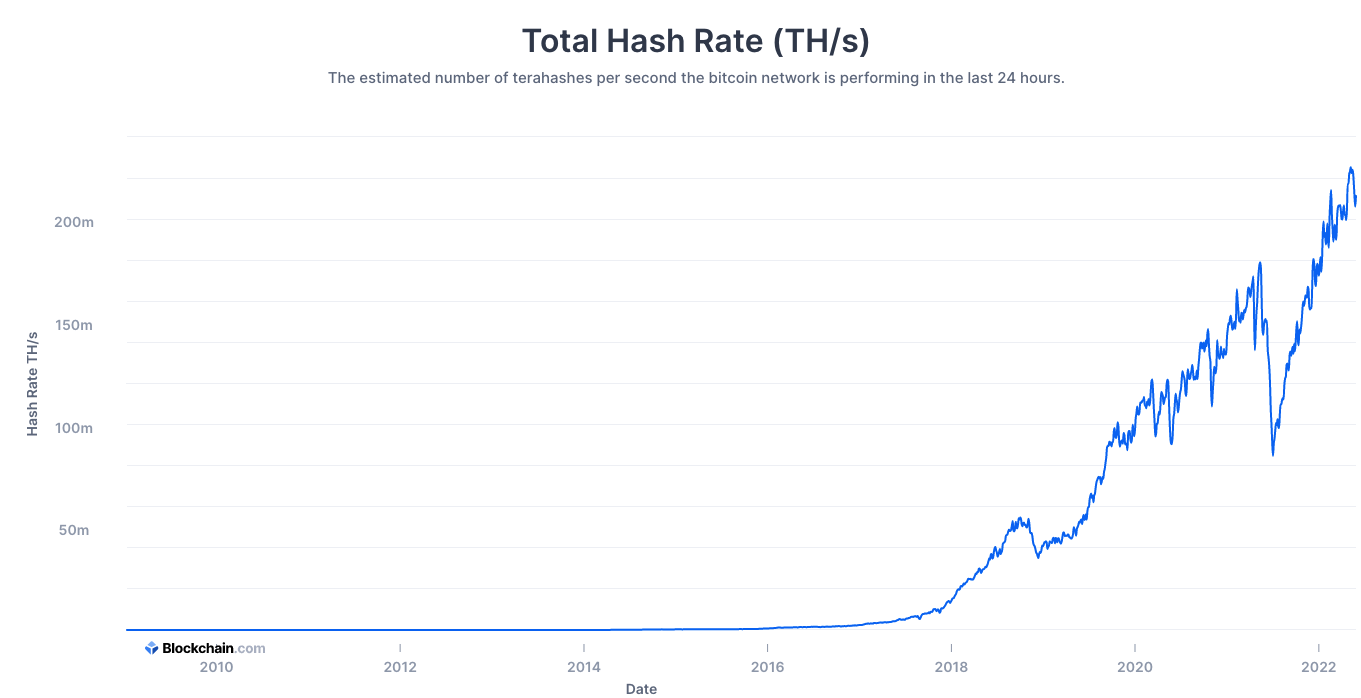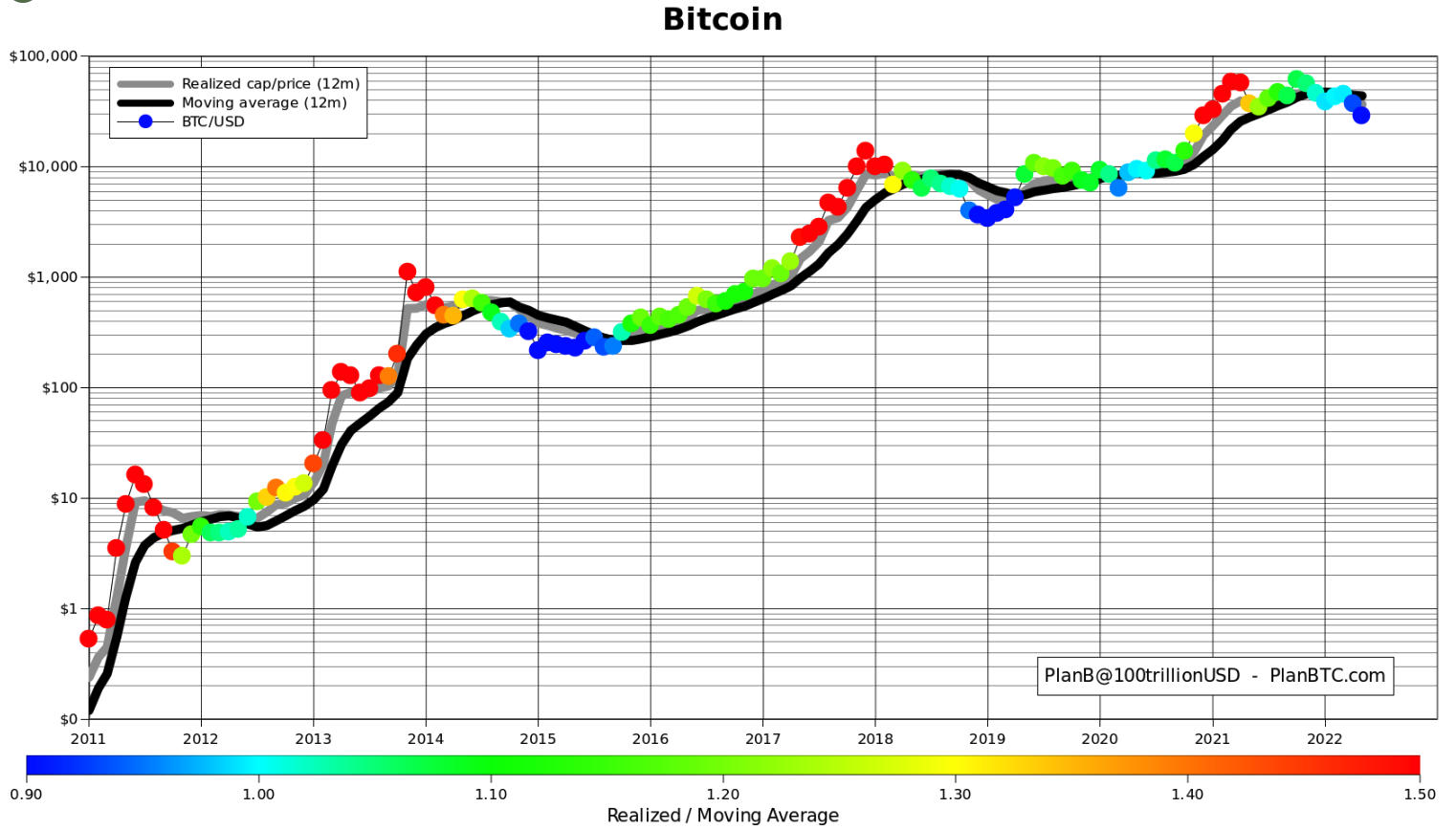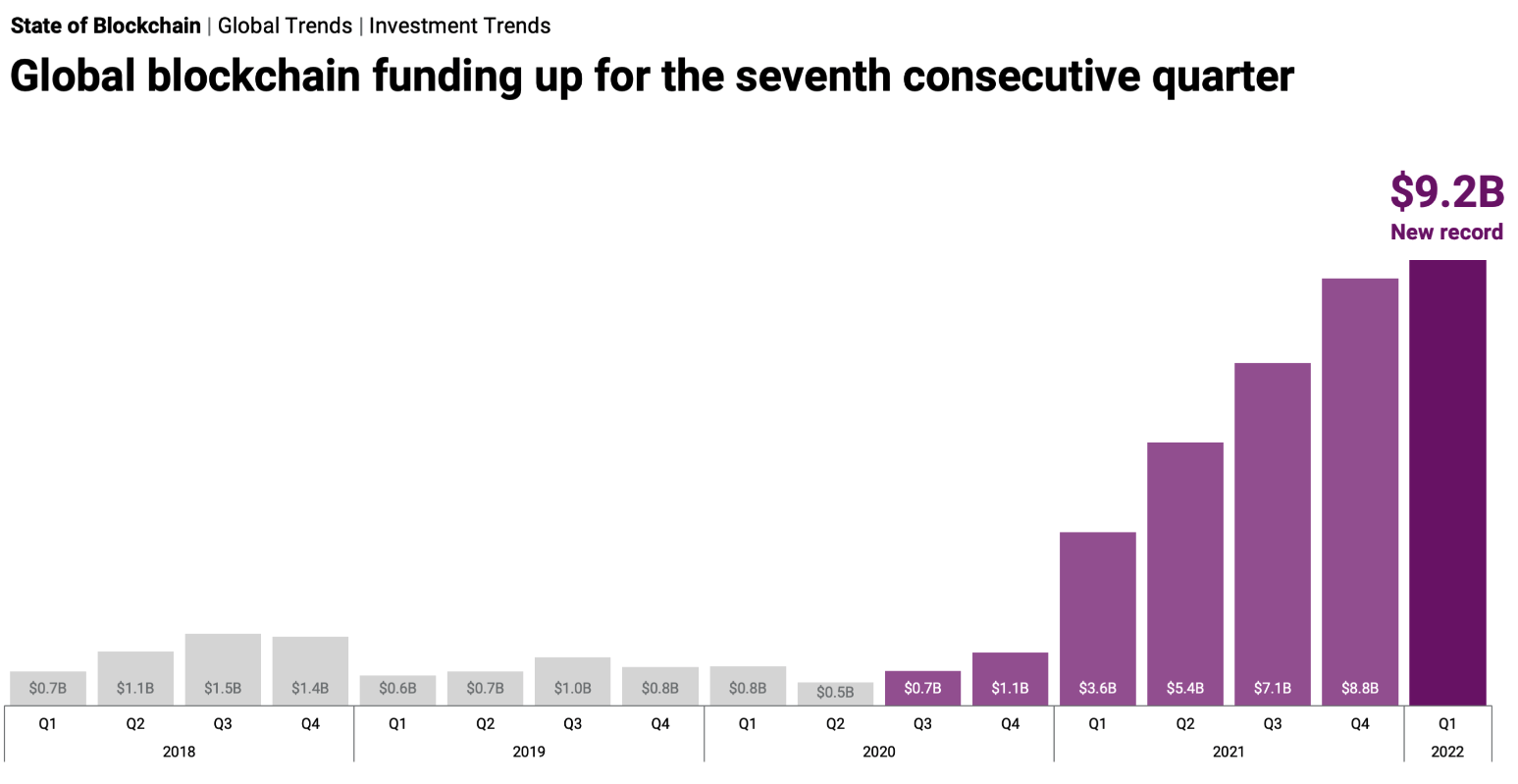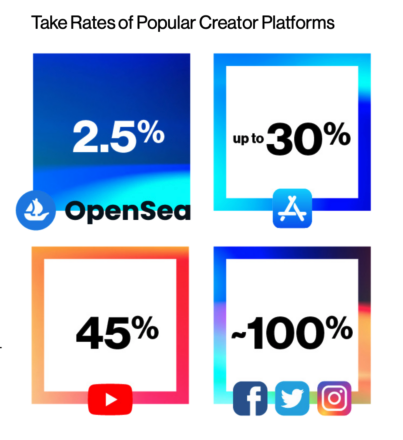The sentiment around the cryptocurrency market is at all time lows, while Bitcoin is trading around $29,000. The last time sentiment was this low, Bitcoin was trading at $3,800 after the March 2020 correction. Oh, how far we have come!
Fear & Greed Index

The adoption of Bitcoin has increased steeply since those 2020 lows, and the rise of the digital age and the need for a digital economy is a big reason for that increase. While many focus on price alone to evaluate the Bitcoin market, let us shift the focus to four other key metrics that are highlighting the growth of the space and the promising outlook for blockchain technologies in the future.
1. Bitcoin Yearly Lows = Bullish Outlook
The Bitcoin price floor in 2021 was more than 7x higher than any year prior.

2. Bitcoin Hash Rate = Bullish Outlook
"Mining hash rate is a key security metric. The more hashing (computing) power in the network, the greater its security and its overall resistance to attack." The Bitcoin hash rate is setting new all time highs in 2022, showing the adoption and resiliency of the network despite the declining value against the USD.

3. Stock to Flow Model = Bullish Outlook
The stock to flow model was originally used to measure gold. Bitcoin is considered a harder form of money than gold, because of its finite supply of 21 million (gold supply remains variable and speculated). As Bitcoin demand continues to surge, less and less are being mined into supply, which over time, ultimately drives the price higher.

4. Venture funding = Bullish Outlook
The value proposition of blockchain technology as well as its upside potential has clearly been recognized by venture capitalists who continue to flood record amounts of capital into blockchain start-ups. A record $9.2B was invested in Q1 2022.

Key Takeaways:
- No Bitcoin was purchased or sold on the open market for less than $29,760 in 2021.
- The Bitcoin hash rate is setting new all time highs in 2022, showing the adoption and resiliency of the network despite the declining value against the USD.
- As Bitcoin demand continues to surge, less and less are being mined into supply, which over time, ultimately drives the price higher.
- A record $9.2B was invested in blockchain technology in Q1 2022.
Global economic conditions and increased tightening of monetary policy by the FED has caused all markets to pull back after the absurd bull market experienced post March 2020. Crypto markets are young and immature compared to established global commodities markets and stock markets as Bitcoin was created relatively recently, in 2008. As Bitcoin goes through bear cycles like the one we are experiencing now, it's important to keep in mind the positive metrics that support the constant innovation and growth of Bitcoin as well as blockchain technology. The future is bright for Bitcoin as digital gold, and it’s only a matter of time until we see the effects of blockchain innovation in our everyday lives.
|
|
|
dApps dMystified By: April L. Charleston, Esq.

Photo by Greg Rakozy on Unsplash
This Month, as we head into Summer, in the midst of a Crypto Winter, perhaps we use this time to educate ourselves on the many uses and innovations that a world built on a blockchain has to offer. Unlike much in this world, we all are “new” to the Crypto space, even if you bought the first wave of bitcoin, this technology is very much still in its nascency and believe it or not, you are new to the space.
This section will break down oft heard terms of art that we’ve all found ourselves nodding along to while the voice in our head is frantically trying to figure out what on earth a “dApp” is and wondering if the guy with the weird hair from Black Eyed Peas has shortened his name and become an NFT mogul.
dApps = Decentralized Digital Applications
Well, if you do the research, apl.de.ap has nothing to do with dApps. So what are they? dApps are applications distributed across a network of computers (nodes) or a cloud based network, instead of one computer or central server. Since they run on a blockchain or P2P network, they are not controlled by any one entity or person. dApps are able to share information, have multiple, unrelated computers verify that information, and then store that information in real time across the globe. dApps provide transparency, they are publicly available and all information on them can be independently verified. dApps avoid attack from malicious users and are failure resistant. Since the information is shared and reconciled across each node, if one node goes down, the others still maintain up to date information that can be used instantly.
Still confused? Consider an old favorite. Remember Napster? That place you ripped dozens of CD’s off to listen to on your ride home from college for the summer? (maybe I did, maybe I didn’t….) Napster was one of the first well known P2P networks. Every desktop in every dorm that had an internet connection and some mp3s on it could share music files with anyone else on the network. You can have my Mariah Carey, I’m downloading the latest Eminem over here. Now my computer and your computer have All I Want For Christmas. If my computer dies, and I get a new one, I can get back on Napster and download my old song from you, or anyone else that has it, all without those pesky copyright overlords chasing us down…oh, wait, they did that.
dApps are like that- we can all share information in real time. We can do so whilst protecting our privacy (although the transactions are public, the “who” is not). dApps are used across industries from social media without censorship, to supply chain solutions for global business, and we’ve only begun to tap into their uses and capabilities.
|
|
|
Which Crypto Changed Tiers?

The biggest news to come out of May concerned the Terra Luna and UST crash. Though exact details are still being unearthed, the crash ultimately came down to the instability of algorithmic stablecoins, growing market fears, and the general state of the economy.
TerraUSD, or UST, is an algorithmic stablecoin. Rather than retain collateral to back the currency, its value is pegged to the dollar via a series of smart contracts that manage Terra’s supply of tokens. Specifically, UST relies heavily on Luna, the Terra blockchain’s native currency, to balance and sustain its value. One dollar worth of Luna can be minted by burning one UST, no matter market fluctuations. Thus, one of the currencies can always be used to increase or decrease the supply of the other. Coupled with arbitrage trading, this system would theoretically inflate demand.
Unfortunately, a single mega trade threw everything off balance. Some believe the trade was in response to the Federal Reserve raising interest rates, which caused both stocks and crypto to drastically drop in value. Others believe that the trade was part of a targeted attack meant to undermine the Terra ecosystem. Regardless, the end result was the same: the value dropped, which encouraged more sales, which led to even lower prices. The algorithm could not keep up with the death spiral, and by mid-May, billions of dollars worth of Luna and UST had been wiped from the crypto ecosystem.
Several other DeFi protocols had already integrated with both UST and Luna, which led to their prices dropping as well. Additionally, an attempt to save UST by selling bitcoin was unsuccessful. Currently, Luna is valued at fractions of a penny while UST isn’t far behind. Though some investors hope to revive Terra via a hard fork, prospects aren’t especially high.
Why it Matters:
This isn’t the first time an algorithmic stablecoin has crashed, which means we must skeptically approach other systems that rely on them. Additionally, many investors previously predicted Luna and UST’s fate but went unheard. It’s important that we understand why this crash happened in order to move forward and prevent future crashes. Crypto can and should recover, but that recovery can only last if we learn and change.
|
|
|
|
As the world floods to TikTok, Instagram, Spotify and YouTube to see the latest post from their favorite influencer or listen to the latest tune from their favorite artist, most people assume that these individuals are making money hand over fist as a reward for their popular content.
While some are lucky enough to score endorsement deals and sponsorships for their success attaining viewers, the platforms they use to connect with their fans aren’t as generous as you might expect.
According to the recent study produced by Andreessen Horowitz, only 15,000 musicians on streaming services (less than 0.2%) make more than $50K/year. Their graphics below are a wake up call for consumers and creators that a better solution may be available already, and it resides on the blockchain.
 
The blockchain solution for creators is a non-fungible token (NFT). These digital assets can be minted or purchased through marketplaces like OpenSea (Ethereum Network) or Magic Eden (Solana Network), or through airdrops directly to specific community members (for free). NFTs offer creators a new way to monetize directly with their fans, while avoiding the high take rates experienced with traditional Web2 platforms. NFT’s are more than just digital art, they are a programmable technology and a way for creators to:
In our July issue, we will dive deeper into the ability to create utility within each NFT (this is where the real value exists). This is achieved through coding and the ability to integrate smart contracts that can provide rewards for the consumer as well as the creator. The opportunities really are endless...
If you create digital content for a living, produce music or digital art, or have a large community of followers, there is a spot on the blockchain for you. We encourage you to reach out to Upcity so we can provide you with a clear understanding of how blockchain technology can better serve you and your business.
|
|
|
Copyright © 2022 Upcity, Inc. All rights reserved.
Our mailing address is:
60 W. Boot Road
West Chester, PA 19380
Want to change how you receive these emails?
You can unsubscribe from this list.
|
|
|
|
|






